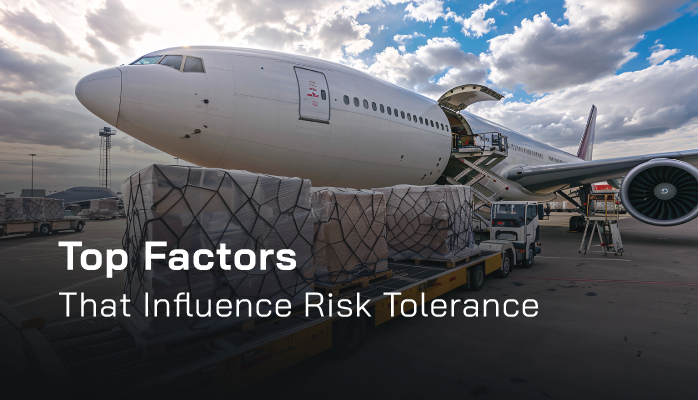What Is Risk Tolerance

Risk tolerance is simply how much risk you are willing to accept in a given activity, task, situation, etc.
High-risk tolerance is not good.
Low-risk tolerance is good, as it means that people will only allow a limited amount of risky behavior. No more risk should be tolerated than necessary for completing a task.
On a system level, the risk tolerance that your SMS practices called Acceptable Level of Safety. However, most often, risk tolerance will be discussed in reference to the psychology of risk. Risk psychology is a blanket term that refers to someone’s internalization of risk while performing a task.
Internalizing risk means:
- To what effect are you aware of potential danger in a situation; and
- To what effect risk is reflected in your actions (i.e., how safely are you acting?).
You might call the “internalization of risk” the opposite of “feelings of safety.”
Factors that influence risk tolerance are simply factors that lead to:
- Greater internalization of risk, resulting in better safety behavior; and
- Reduced internalization of risk, resulting in riskier behavior.
Here are factors that increase or reduce internalization of risk and influence risk tolerance.
Overestimating Capability/Experience (Dunning-Kruger Effect)
Overestimation of capability has a very negative impact on risk internalization and leads to risky behavior.
Overestimation of capability or experience is famously captured by the Dunning-Kruger Effect. This famous study shows us how cognitive bias in relation to perceived ability vs. actual ability in performing a task:
- People with lower experience with performing a task often greatly overestimate their ability;
- People with moderate experience with performing a task have the least confidence (underestimate) in their capability; and
- People who are experts in performing a task tend to accurately estimate (or marginally underestimate) their ability.
You might see this kind of mindset in new employees or inexperienced employees. Emergency drills and safety training are great ways to help employees understand the limits of their ability.
Familiarity With Task
Familiarity with a task tends to have a negative influence on risk tolerance. As an employee performs the same task over and over, they tend to internalize less risk each time they perform the task.
This leads to a dulled awareness of the situation and potential dangers involved in performing the task.
A good way to combat familiarity with task risks is to use checklists. This allows the task to be performed with consistency and ensures that shortcuts are not overlooked.
Also, having a company policy of “Trust but verify” is also a good way to combat familiarity.
Time Into Performing Task

As a task nears completion, people tend to internalize less risk. This is known as continuation bias, whereby there is a reduced awareness of danger and changing conditions as time into a task increases, and as the goal/destination nears completion. For example:
- 47% of plane accidents occur during final approach and landing
- Only 11% of plane accidents occur during the initial approach
- Ground-crew accidents are about 50% higher during arrival than during takeoff
Continuation bias is determined by three following factors:
- Proximity to completion/destination;
- Time into performing the task/mission; and
- Prevalence of rules and procedures.
Having effective rules and procedures for performing tasks and completing missions is a good way to maintain risk internalization throughout the entire process of a task.
Severity of Outcome
The more severe an outcome, the better effect it has on risk internalization. In other words, the worse the consequence, the more positively it influences risk tolerance.
What this looks like in actual practice is that when employees know a particular task has potentially very severe consequences, they behave safer and are more cognizant of how their actions affect risk.
Ensuring that likely outcomes are well communicated is a good way to make sure employees know the risks associated with their tasks.
Related Aviation Risk Assessment Articles
- How to Justify Severity of Risk Assessments - Best Practices
- How to Assign Severity and Likelihood to Issues When Assessing Risk
- How to Define Severity and Likelihood Criteria on Your Risk Matrix
Social Pressures
Social pressure can positively or negatively influence risk tolerance. Social pressure is determined by the existing Norms in your organization.
Norms refer to the practices and mindsets that develop over time in your organization. When safety is held as a high priority in an organization, it will have norms that correspond with social pressures to behave safely.
In companies with poor safety culture, such as with silos, resistance to change, or pressure to perform, there can be many social pressures that negatively influence risk tolerance. Building good safety culture is a good way to ensure good social pressure.
Personal Experience With Negative Outcome
Personal experience with negative outcomes tends to greatly influence risk tolerance positively. Simply put, employees who have not experienced some kind of negative outcome are more likely to have more risk tolerance than someone who has experienced negative outcomes.
For this reason, more experienced employees are likely to behave safer because they are more likely to have experienced negative outcomes.
Training and stories related to negative outcomes can help inexperienced employees understand and feel the negative outcomes that can be experienced from having high-risk tolerance.
Confidence in Control Measures
Too much confidence in control measures tends to negatively impact risk tolerance. Why? Because “too much confidence in control measures” is a psychological maneuver that:
- Places onus of safety on controls, rather than personal behavior; and
- Decreases sense of personal responsibility for outcomes.
Confidence in Technology/Machine
Much like too much confidence in control measures, too much confidence in technology, machine, or aircraft tends to have a negative influence on risk tolerance.
Just consider how many aviation accidents have taken place because pilots did not second guess strange instrument readings. Having strong procedures for enabling critical scrutinization of used technologies is a good way to help mitigate this risk.
Last updated June 2025.






